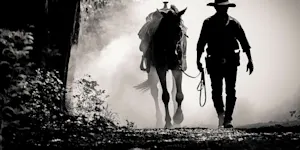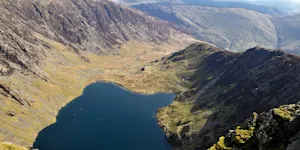What Makes This Word Tick
Ah, "cromlech" — a word that beckons the mysteries of ancient history and sparks the imagination. It's a term often used to describe prehistoric megalithic structures, frequently stone circles or dolmens. For those who delight in archaeology or a stroll through a historical site, "cromlech" resonates with echoes of times long past.
If Cromlech Were a Person…
Imagine a wise, old historian, covered in a fine layer of dust from years spent exploring ancient sites. They speak in measured tones, full of reverence for the antiquities from which they've learned so much. They have a knack for storytelling that makes even the most stone-cold facts come alive.
How This Word Has Changed Over Time
The word "cromlech" hasn't altered much since its origins. Yet, over the years, its usage has shifted somewhat. Where once it might have been a more technical term used strictly by scholars and archaeologists, today it might pop up in a conversation at an eclectic book club or during a tea break after a rambling hike through a historical landscape.
Old Sayings and Proverbs That Use Cromlech
While you won't find cromlechs nestled in the usual snug of old sayings, the structures themselves might inspire a proverb about standing the test of time or weathering life's storms with stoic grace.
Surprising Facts About Cromlech
Cromlechs can be found across Europe, notably in Brittany, France, and in Wales. These structures were likely used for ceremonial purposes, perhaps even astronomy, aligning with celestial bodies. Each stone circle tells its own tale, standing as a testament to human ingenuity long before modern engineering.
Out and About With This Word
If you find yourself on a journey through the countryside of Wales or Brittany, keep an eye out for these ancient formations. Visiting a cromlech is like stepping back in time and walking amidst the whispers of history.
Pop Culture Moments Where Cromlech Was Used
While not a common feature in blockbuster films, cromlechs have captured the imagination of fantasy genre creators. They appear in books and games where the mystical and historical intersect, like "Outlander" or in the world-building of certain video games.
The Word in Literature
You'll often cross paths with "cromlech" in literature that involves quests or historical retrospectives. Think titles that blend history with fiction—perhaps in a novel by Ken Follett or a work focusing on the allure of ancient myths.
Moments in History with Cromlech
Consider how cromlechs may have stood witness to significant historical changes in the communities that erected them, from the transition through the Bronze Age to the Iron Age. They are silent observers of our ancestors' major life events—births, deaths, and everything in between.
This Word Around the World
Globally, variations of structures akin to cromlechs appear in places like Africa and Asia, highlighting humanity’s universal drive to reach up to the sky or honor the Earth. The word itself, however, is particularly associated with the Celtic regions.
Where Does It Come From?
"Cromlech" hails from the Welsh, with "crom" meaning "bent" or "curved" and "llech" meaning "slab" or "flagstone." It perfectly describes those majestic curved stone alignments dotting the landscapes.
How People Misuse This Word
The most common mishap with "cromlech" is confusing it with other types of stone formations, such as cairns or menhirs, which all serve different purposes and have distinct characteristics.
Words It’s Often Confused With
Dolmen: More specifically refers to a single-chamber megalithic tomb.
Menhir: A singular standing stone, often monumental.
Cairn: A heap of stones set up as a landmark or memorial.
Additional Synonyms and Antonyms
While "cromlech" doesn’t have perfect synonyms due to its specificity, you might consider "megalith" in a broader sense. Antonyms aren’t applicable here since these structures uniquely stand alone in their ancient majesty.
Want to Try It Out in a Sentence?
"During our trip to Brittany, we stumbled upon an ancient cromlech, standing silently amidst the rolling hills, a testament to the region’s rich prehistoric past."
















